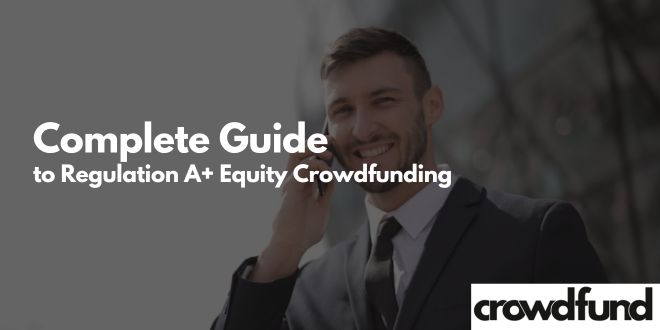Equity crowdfunding has opened a new frontier for founders eager to raise capital without courting a handful of elite venture capitalists. Regulation A+, often called “Reg A+”, sits at the center of that movement. Passed as part of the JOBS Act in 2012 and fully implemented in 2015, Reg A+ lets growth-stage companies tap everyday investors while staying within the guardrails of U.S. securities law.
Below you’ll find a practical, plain-English roadmap that explains what Regulation A+ is, why it matters, and how to decide whether it fits your capital-raising plans.
Understanding Regulation A+
Reg A+ is sometimes described as a “mini-IPO” because it blends many of the advantages of a public offering, broad investor reach, marketing freedom, without imposing the same level of expense and red tape. But “mini-IPO” can also be misleading; the exemption comes with its own rules you’ll need to treat seriously.
The Two Tiers in Plain English
Reg A+ is split into Tier 1 and Tier 2.:
- Tier 1 allows you to raise up to $20 million in any 12-month period. You must clear your offering with both the SEC and each state in which you plan to sell securities. For smaller, region-focused companies, Tier 1 is often sufficient.
- Tier 2 lifts the ceiling to $75 million over 12 months and pre-empts most state securities review, making multi-state fundraising far simpler. Because Tier 2 waives state review, it demands stricter SEC reporting after your raise (think semi-annual filings and audited financials).
In short: Tier 1 offers lighter ongoing reporting, Tier 2 offers a higher cap and nationwide reach. Your decision typically hinges on how much you need to raise and where your investors live.
Eligibility for Issuers and Investors
- Issuers: Reg A+ is open to U.S. and Canadian companies organized under U.S. or Canadian law. You cannot already be an SEC-reporting company (i.e., fully public), nor can you be a blank-check or investment company. You must have a concrete business plan, audited financials (Tier 2), and a “bad actor” check that every officer, director, and major shareholder must pass.
- Investors: Tier 1 has no investor income or net-worth limits. Tier 2 restricts unaccredited investors to investing no more than 10% of their annual income or net worth, whichever is greater, unless the securities are listed on a national exchange after the offering. Accredited investors have no cap. This blend of access and guardrails is what makes Reg A+ such an attractive equity crowdfunding path: Main Street can participate, but within risk-sensible boundaries.
Key Advantages of Regulation A+
Compared with traditional venture capital or a full IPO, Reg A+ offers a handful of real-world perks:
- Community ownership: You can transform early product evangelists into actual shareholders, turning customers into vocal brand advocates.
- Marketing freedom: Regulation A+ permits “testing the waters” campaigns before you file your detailed offering circular, so you can gauge investor appetite without paying full legal fees up front.
- Flexible deal terms: Common stock, preferred stock, SAFEs, convertible debt, Reg A+ does not lock you into one security type.
- Secondary liquidity: Unlike Regulation D raises, shares sold under Reg A+ are immediately unrestricted; investors can trade them on alternative trading systems or, with additional work, uplist to NASDAQ or NYSE.
- Branding halo: A successful Reg A+ raise signals market demand and can draw media coverage that a private seed round rarely earns.
Hurdles and Compliance Obligations
None of those benefits matter if you stumble on compliance. Reg A+ is still a securities offering, and the SEC can shut down campaigns that cut corners.
Filing and Reporting Checklist:
- Audited financial statements (Tier 2 only). Tier 1 companies can use reviewed financials, but many opt for audits anyway to instill confidence.
- Form 1-A offering statement, which includes two parts: narrative disclosure (Part II) and financials (Part F/S).
- State “blue sky” registration for Tier 1, or a notice filing for Tier 2 if any state requires it.
- Ongoing reports:
- Tier 1, only a closing report (Form 1-Z).
- Tier 2, annual Form 1-K, semi-annual Form 1-SA, and current reports on Form 1-U for material events like a CEO change or new financing.
- Bad-actor checks on officers, directors, promoters, and 20%+ shareholders.
- Escrow and transfer agent agreements, Reg A+ requires an independent registered transfer agent if you have more than 2,000 investors.
A strong securities attorney and an experienced platform provider can turn this list from intimidating to manageable. Expect legal and accounting expenses to run from $50,000 (lean Tier 1) to $250,000+ (complex Tier 2 with audited statements). Budget wisely; skimping on compliance is the fastest way to alienate investors and regulators alike.
Launching a Successful Reg A+ Campaign
Even the cleanest legal filing won’t raise a dime without a resonant story and a thoughtful marketing plan. Reg A+ lets you engage potential investors on social media, podcasts, live webinars, and email newsletters from day one, so lean into that flexibility.
Marketing Strategies That Work:
- Build a pre-launch waitlist. Use “testing the waters” ads to invite prospects to reserve shares before you file your Form 1-A. Conversion rates skyrocket once you reopen those reservations during the live raise.
- Create founder-driven video content. Investors back people as much as they back products. Personal videos outperform slick agency reels because authenticity drives trust.
- Leverage existing communities, customers, followers, partners, through referral bonuses or investor perks such as product discounts or early access features.
- Keep storytelling data-rich. Everyday investors crave narratives but also want to see unit economics, market size, and long-term growth plans. Striking that balance positions your campaign as both exciting and credible.
- Post-raise communication matters. Quarterly updates, behind-the-scenes videos, and transparent discussion of setbacks turn investors into lifelong advocates and help when you pursue a future Series B or exchange listing.
Final Thoughts
Regulation A+ sits in a sweet spot between private seed rounds and the public markets, offering wider reach without a Wall Street price tag. It is not, however, a shortcut. You’ll need disciplined financial record-keeping, a seasoned legal partner, and the stamina to run a months-long marketing push. If you can marshal those resources, and you have a product the crowd will rally behind, Reg A+ equity crowdfunding can fuel rapid growth while building a passionate investor community.
Before pulling the trigger, weigh how much capital you need, where your investors live, and whether you’re ready for public-facing transparency. When those pieces line up, Regulation A+ can be more than just a funding mechanism; it can become a cornerstone of your brand’s identity and a launchpad for even bigger aspirations.







.png)